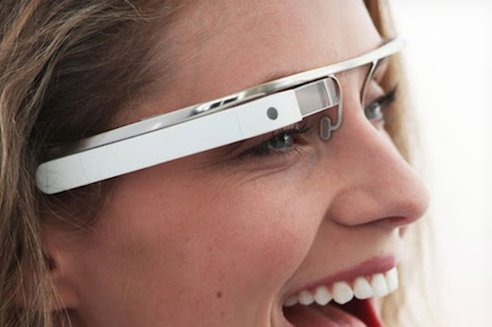 You may, or may not, have heard the term Augmented Reality being used. In fact, you may have even experienced it without knowing it as Augmented Reality.
You may, or may not, have heard the term Augmented Reality being used. In fact, you may have even experienced it without knowing it as Augmented Reality.
So what is Augmented Reality?
To put it simply: Augmented Reality is taking what your natural eyes can see, and then adding something to it, ie. Augmenting it. It can be found on modern smart phones via apps that will create extra content on top of what the phone camera sees. Google maps can do this for you, adding information about your current locale – for example it can show you nearby restaurants, landmarks etc.
This all sounds amazing! When can we have more of this?
Well Google, among other tech companies, have made the decision to take this further and are developing a product they call Google Glasses. You wear them just like normal spectacles, and they have a small screen that sits in front of one eye. This screen can feed you info based on what a small camera built into the glasses is seeing, which is the same as what your actual eyes are seeing.
Over the last few months the announcement of this technology has led to campaigns such as the Stop the Cyborgs Campaign. This has been setup by people who have privacy concerns about this new technology. People have even gone as far as creating spoof videos of people using them to find out private details about others – they see this technology as a breach of privacy. (http://www.youtube.com/watch?v=8UjcqCx1Bvg)
So can we use Augmented Reality safely?
Augmented Reality is already here, and people have been using it successfully in industry and other areas to enhance their working practices for quite some time. So yes, it can definitely be used safely.
Another clever use I have discovered is an Augmented Reality business card. If you point your phone camera at the card, it produces a 3D image of the person along with all their relevant details. A similar use of this technique was a picture of a car that had an accompanying phone application. When you downloaded the application and pointed the phone at the picture of a car, a 3D model of the car would appear. This could then be viewed from all angles, and even zoomed into to see the car in more detail.
These are both innovative and clever uses of this technology, and I can see how they will benefit us long term.
Should we be worried?
I for one prefer to consider the positives over the negatives, and when balanced up the glasses are only pulling the info already available on the World Wide Web. If you put all your info on the web, then people can find it with a phone, tablet, computer or glasses – it exists in the public domain. I actually get quite worried at how relaxed some people are with their use of social media, especially how much they willingly share about themselves. If we limit what we post online, then there will be less out there to be found.
For business use I can only see positive aspects, as this will make accessing data so much easier – allowing for smarter thinking and decision making processes. For example: if I was wandering around a construction site, saw something questionable, and needed to see the architect’s drawings immediately. I could simply ask for them and they would appear in my line of view, right in front of the part of the building that I am looking at. In manufacture, I could be walking around a plant and then need to see some important info, again I ask and it appears right there in front of my line of view.
Conclusion
I don’t really have a complete conclusion for this post, as this is still a developing technology. We can, as a population, decide to use this in a smart way, or conversely, we can use it in not so smart ways – only history will tell us which way we went.
What are your thoughts?
Ian Thomson
Founder/Senior Trainer/Consultant
IT Turning Point
